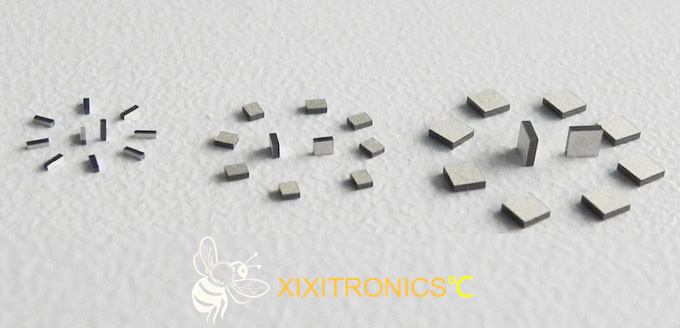What are the performance differences between NTC thermistor chips with gold electrodes and silver electrodes, and how do their market applications differ?
NTC (Negative Temperature Coefficient) thermistor chips with gold electrodes and silver electrodes exhibit significant differences in performance and market applications, primarily due to the inherent physical and chemical properties of the electrode materials. Below is a detailed comparative analysis:
I. Performance Differences
1. Conductivity and Contact Resistance
- Gold Electrodes:
- Good conductivity, though slightly lower than silver (resistivity of gold: ~2.44 μΩ·cm vs. silver: ~1.59 μΩ·cm).
- More stable contact resistance due to gold’s resistance to oxidation, ensuring minimal resistance drift over time.
- Silver Electrodes:
- Superior conductivity, but prone to surface oxidation (especially in high-temperature or humid environments), leading to increased contact resistance and signal instability.
2. Oxidation and Corrosion Resistance
- Gold Electrodes:
- Extremely stable chemically; resistant to oxidation and corrosion (e.g., acids, alkalis), ideal for harsh environments (high humidity, corrosive gases).
- Silver Electrodes:
- Reacts with sulfur and oxygen to form silver sulfide/oxide, degrading performance over time when exposed to air.
3. Temperature Stability
- Gold Electrodes:
- Excellent high-temperature stability (withstands >150°C), suitable for industrial or automotive applications (e.g., engine compartments).
- Silver Electrodes:
- Oxidation accelerates at high temperatures; typically limited to ≤100°C without protective packaging.
4. Solderability
- Gold Electrodes:
- Compatible with common solders (e.g., tin paste), ensuring reliable soldering for automated SMT processes.
- Silver Electrodes:
- Requires anti-oxidation solder or nitrogen-protected soldering to prevent oxidation-induced defects (e.g., cold joints).
5. Lifetime and Reliability
- Gold Electrodes:
- Long lifespan, ideal for high-reliability applications (e.g., medical devices, aerospace).
- Silver Electrodes:
- Shorter lifespan but sufficient for mild environments (e.g., household appliances).
II. Market Application Differences
1. Gold Electrode Chips
- High-End Industrial & Automotive Electronics:
- Engine control units (ECU), battery management systems (BMS), industrial sensors in high-temperature/vibration environments.
- Medical Devices:
- Temperature monitoring in medical imaging, patient monitors (requiring biocompatibility and stability).
- Aerospace & Defense:
- Temperature sensing in extreme conditions (radiation, rapid thermal cycling).
- Precision Instruments:
- Laboratory equipment, high-accuracy thermal control systems.
2. Silver Electrode Chips
- Consumer Electronics:
- Battery temperature protection in smartphones, laptops (cost-sensitive, mild environments).
- Home Appliances:
- Temperature control in air conditioners, refrigerators, water heaters.
- Lighting & LED:
- Overheat protection in cost-sensitive lighting systems.
- Low-End Industrial Equipment:
- Non-demanding environments (e.g., small motors, power adapters).
III. Cost and Supply Chain Considerations
- Gold Electrodes: High material cost (gold is ~70-80× pricier than silver), but stable processes and high yield justify their use in low-volume, high-value applications.
- Silver Electrodes: Lower material cost, suitable for mass production, but may require anti-oxidation coatings (e.g., nickel plating), adding manufacturing complexity.
IV. Summary and Recommendations
- Choose Gold Electrodes for: High-temperature, corrosive, or reliability-critical applications (automotive, medical, aerospace).
- Choose Silver Electrodes for: Cost-sensitive, mild-environment applications with moderate lifespan requirements (consumer electronics, appliances).
By balancing performance needs, environmental conditions, and budget constraints, the optimal electrode type can be selected for your application.
Post time: Mar-13-2025


